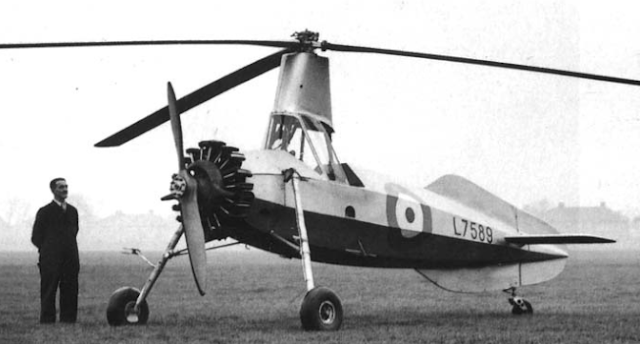Designed to meet the 0.27 / 34 program, the all-metal Blackburn B-24 Skua was a cleavage with the traditional British navy canvas biplanes. It was the first in-flight dive bomber and the first aircraft to operate from an aircraft carrier built in Britain with flaps, a fully retractable main landing gear and a variable pitch propeller.
The Skua, competing with projects developed by Avro, Boulton Paul, Hawker and Vickers, won the Navy contract and ordered two prototypes in April 1935. The first of these flew to Brough on the 9th February 1937 with a Bristol Mercury IX engine of 840 hp (626 kW).
After being exhibited among the novelties at the RAF Hendon Open House on June 26, 1937, and then at the SBAC Show in Hatfield, two days later, the prototype was transferred to the Aircraft Test Center. and armaments at Martlesham Heath. Reports of Skua flying qualities were favorable. It was tested for aerial fire at Martlesham, and ditching at Gosport.
With a purchase order for a total of one hundred and ninety Skua's six months before the prototype was flown, Blackburn looked for subcontractors to speed up production. Since the Mercury engines were primarily reserved for the Bristol Blenheim twin engine, the Skua series received a Bristol Perseus XII of 890 hp (664 kW) and was named Skua II.
The seeded plane took to the air at Brough on August 28, 1938, with few changes to the basic model, except for up-bent wing salmons and a different tail-wheel damper, intended to suppress certain vibrations. The hundred and ninety series aircraft were delivered between October 1938 and March 1940, that is to say with a delay of about a year compared to initial forecasts. The first units of the Fleet Air Arm to take into account the Skua, in 1938, were the Squadrons 800 and 803 - aboard the Ark Royal - which then abandoned their Hawker Nimrod and Osprey. Squadron 801 was transformed aboard the Furious and Squadron 806, then in Eastleigh, also received Skua before the start of the Second World War.
Although outnumbered as a fighter, the Skua gained a good reputation as a dive bombing plane when sixteen Squadron 800 and 803 Hankthands in the Orkneys sank the German cruiser Könígsberg into the port of Bergen, Norway, April 10, 1940 at dawn. Although operating at the extreme limit of their range, all but one returned to their base after this long night flight. These two units, however, had to be hit hard eleven days later by losing most of their aircraft during a raid on Narvik.
Detroit-based 801 Squadron Skua protected the Dunkirk evacuation, but these machines were removed from the front lines in 1941, when Squadrons 800 and 806 were converted to Fairey Fulmar, and Squadrons 801 and 803 to Hawker Sea Hurricane. . Skua survivors ended their careers in a quieter way, like target tugs or training planes.
The wreck of a Skua, removed from a Norwegian lake, is on display at the Fleet Air Arm Museum in Yeovilton.
Specifications :
 Crew: 2
Crew: 2Length: 10.8 m
Spear gap: 14.1 m
Height: 4.3 m
Wing area: 29.0 m²
Empty weight: 2 490 kg
Maximum take-off weight: 3 730 kg
Power unit: 1 × Bristol Perseus XII engine; 675 kW (905 hp)
Maximum speed: 360 km / h in 2000 meters
Combat Beam: 1 300 km
Height above sea level: 6 150 m
Armament :
4 × forward shot .303 machine guns
1 × swiveling .303 Lewis or Vickers machine gun in rear cab
230 kg armor blast bomb or 115 kg bomb and 4 × 18 kg / 8 × 9 kg bomb








0 commentaires :
Post a Comment